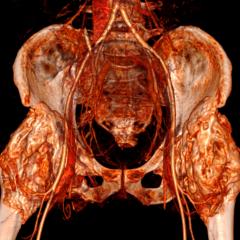People with muscle mutations generate more heat than others in resting muscles putting them at greater risk of serious health events, according to University of Queensland researchers.
Researchers found gene mutations in the ryanodine receptor 1 (RyR1), a channel that regulates normal muscle contractions, causes it to leak calcium more than healthy muscles at rest.
Associate Professor Bradley Launikonis said this creates conditions that makes muscles susceptible to uncontrolled contractions under stresses such as high environmental temperatures, especially while exercising, and generating dangerous levels of body heat.
“Susceptibility to malignant hyperthermia also increases, where people can react to general anaesthetics and experience increased body temperature, which can lead to possible death.”
Normal contractions are created with a steady flow of calcium that is released when muscles are stimulated.
To understand how calcium is regulated in muscles, researchers studied male and female mice with four different genotypes. Interestingly, female mice were more protected from overheating, even when carrying the same RyR mutation as the male mice.
Associate Professor Launikonis said in mammals, as demonstrated in this mouse study, the RyR1 channel leaks calcium at rest to generate the heat needed to maintain normal body temperature. This is essential for life in mammals and mutations in the channel makes things go wrong.
“We found normal muscle function was possible with moderate calcium leaks, but not when severe gene mutations were present,” Associate Professor Launikonis said.
“This led to a muscle disease known as RyR myopathy, which can produce severe muscle weakness and even death in human infants.
“Mice with the RyR1 mutation were more prone to adverse reactions to anaesthetics and increased muscle temperature than normal healthy mice,” he said.
“This study demonstrates the risks for people with muscle mutations.
“This condition removes a layer of protection that our muscles have to stop excess heat being generated when we’re moving outside during extreme temperatures or exposed to anaesthetics in the operating theatre,” Associate Professor Launikonis said.
“This may put people with muscle mutations at greater risk of heatstroke during exercise, cardiac arrest from hyperthermia, and even death under general anaesthetic.
“It doesn’t stop them from being elite athletes. Many people with this condition demonstrate outstanding athletic ability. It’s exercising under extreme heat or having an operation under certain anaesthetics that can cause the problem.”
This paper is published in the journal Science Advances. DOI: 10.1126/sciadv.abi7166



